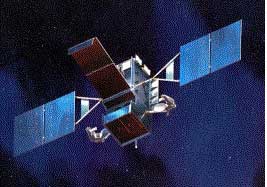
The first Space Based Infrared Systems geosynchronous Earth orbit satellite, currently undergoing a rigorous operational certification process, is meeting or exceeding performance requirements, and on track to be delivered into operations.
Within two months after launch, SBIRS began sharing initial GEO-1 satellite data with technical intelligence mission partners in order to enable early assessments of sensor performance.
On-orbit performance of the first GEO-1 satellite has proven superb. At the payload level, the GEO sensors are detecting targets 25 percent dimmer than requirements with an intensity measurement that is 60 percent more accurate than specifications. The payload pointing is nine times more precise than required, which is a key confidence measure for achieving a system level line-of-sight accuracy well within specification.
The SBIRS GEO-1 satellite includes sophisticated scanning and staring sensors that deliver improved infrared sensitivity and target area scan rates over the current constellation. The scanning sensor provides wide area surveillance of missile launches and infrared phenomena across the earth, while the staring sensor can be used to observe smaller areas of interest with superior sensitivity and revisit time.
While the satellite and its respective ground systems continue final system tuning through May of this year, interim mission performance results indicate that the system already demonstrates the ability to meet more than 90 percent of Air Force Space Command's performance requirements for operational use. The remaining performance refinements are on track to be completed prior to the formal testing campaign slated to begin in June.
"We've been extremely pleased with the performance of this first-of-its-kind spacecraft," said Col. James Planeaux, director of the Infrared Space Systems Directorate. "We fully expect GEO-1 to enter services as an invaluable military asset that will help protect our nation and its allies for many years to come."
Live GEO-1 data will be included in the nation's missile warning and theater event networks during a trial period and operation utility evaluation this fall. This first GEO satellite is expected to be certified for operations by U.S. Strategic Command by the end of 2012.
As one of the nation's highest priority space programs, SBIRS delivers global, persistent, taskable infrared surveillance capabilities to meet 21st-century demands for early warning of missile launches and simultaneous support to other critical missions including missile defense, technical intelligence, and battlespace awareness.
The SBIRS architecture features a mix of GEO satellites, payloads in highly elliptical Earth orbit, and associated ground hardware and software that provides a timely, accurate and clear infrared view of any region of interest around the globe during peacetime and all levels of conflict. The GEO satellites replace and improve upon the legacy Defense Support Program satellites, offering enhanced sensor flexibility and sensitivity to provide global, taskable, 24/7 infrared surveillance capabilities to support the warfighter.
The SBIRS development team is led by the Infrared Space Systems Directorate at the U.S. Air Force Space and Missile Systems Center, Los Angeles Air Force Base, California. Lockheed Martin Space Systems Company, Sunnyvale, California, is the SBIRS prime contractor, with Northrop Grumman Electronic Systems, Azusa, California, as the payload integrator. The 14th Air Force operates the SBIRS system.

